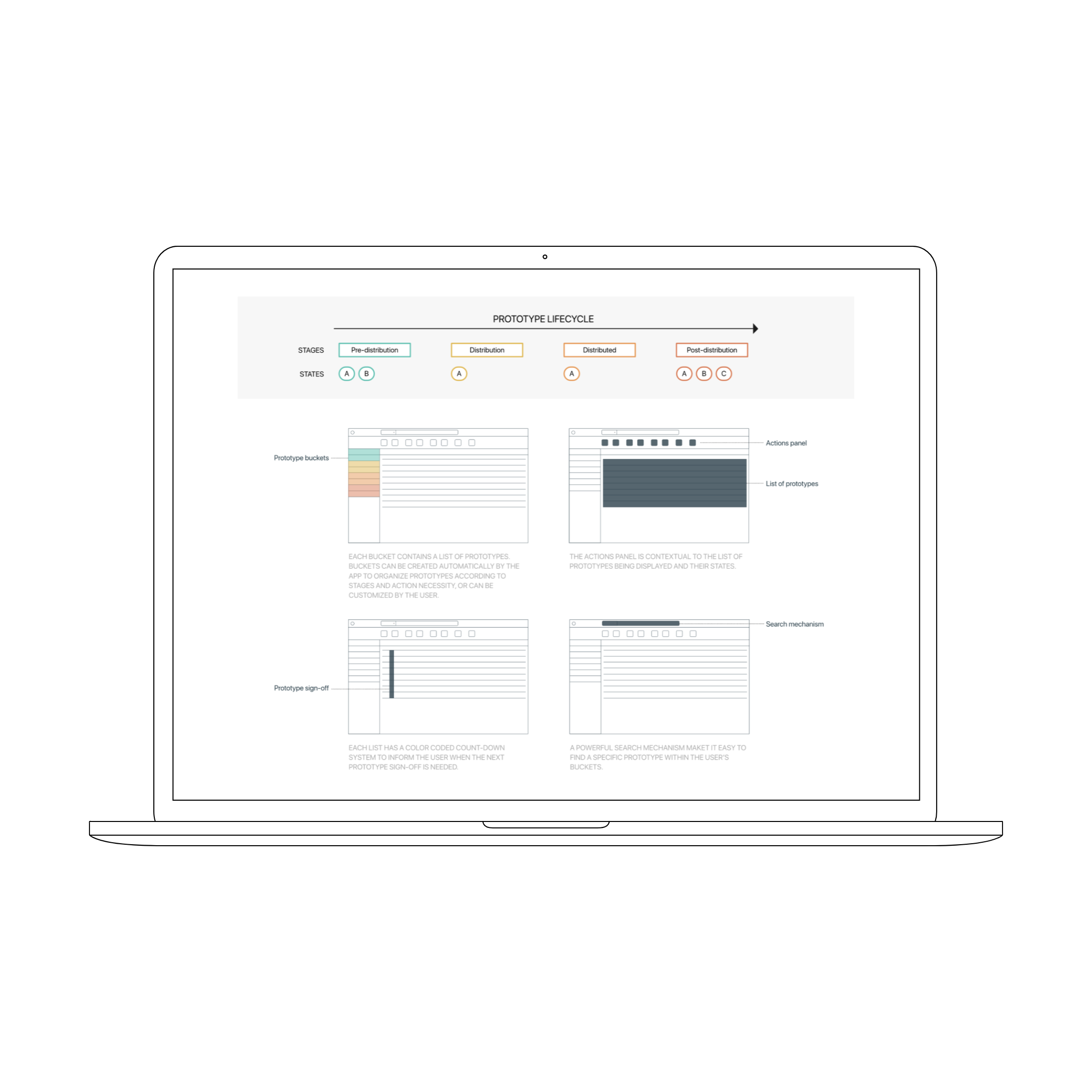Tracking The Lifecycle of Physical Prototypes
Client: American Multinational Tech Company
My Role: UX Designer and Researcher
Overview
The legacy system used for tracking and managing the lifecycle of prototypes was inefficient and outdated, resulting in slow performance and a lack of alignment with the daily workflows of those responsible for testing and managing prototypes.
Challenge
The complete redesign of the enterprise app to track the lifecycle of confidential physical prototypes, ensuring a high level of security, following complex business rules, and serving a wide range of stakeholders and users across the organization.
Agile Design, Agile Development
The only UX designer in the project, I worked with a geographically distributed team across Canada, the US and Brazil, using Scrum and Agile UX in two-week sprints.
I worked at least one sprint ahead of the development sprint, iterating quickly to understand requirements, test solutions, write user stories and acceptance criteria, and make prototypes.
Most requirements and solution validations were conducted remotely through prototype and user flow presentations, informed by stakeholder discussions. In-person research was employed for more complex system components and instances where shadowing, observation and interviews were essential to understand the staff journey.
Design Activities
UX Design
In this project, I utilized a variety of prototyping tools, with Omnigraffle being central to the process. Omnigraffle was integrated with Confluence, where the requirements were documented, creating a seamless workflow for design and documentation. Alongside prototyping and conducting quick iteration sessions with client stakeholders throughout the sprints, I collaborated closely with QA team members to deepen scenarios and ensure that designs were aligned with quality expectations. I also wrote clear and comprehensive acceptance criteria that directly linked to the wireframes and prototypes, ensuring that the documentation was easily understandable for both the development and QA teams. This approach facilitated smooth communication across teams and supported the efficient implementation of design solutions.
Research
In my research activities, I employed a variety of methods to thoroughly understand user experiences and inform design decisions.
Usability Studies
Informal studies provided quick, real-world insights into user interactions, helping to identify issues and refine the design based on genuine feedback.
Field Studies
Gained insights into how users experienced the service in real-world scenarios through shadowing and contextual inquiry.
Service Design Thinking
I viewed lifecycle prototype tracking as an ongoing service that extends beyond digital interfaces, ensuring the full experience was captured.
Co-Creation
Created alignment in situations of complexity or conflicting opinions, bringing diverse perspectives together to collaboratively shape solutions.
I engaged in informal participant outreach to recruit individuals for interviews, shadowing opportunities, and co-creation sessions. As my understanding of the business context behind the tool deepened, I proactively collaborated with the client to identify and connect with stakeholders who could address specific questions.
Impact
The updated app was successfully rolled out company-wide and received positive feedback across teams, significantly improving workflow efficiency and enhancing security measures. By reducing friction in the lifecycle management process, the app provided a smoother, more streamlined experience for users, ultimately driving greater productivity.
Through close collaboration with stakeholders, the app accurately reflected the business rules and priorities identified during the project, simplifying prototype management and aligning the system with organizational goals.
In addition, human-centered design practices were successfully integrated into the development process, with client stakeholders actively adopting these practices and contributing to the ongoing design iterations. This adoption of human-centered approaches not only improved the user experience but also fostered a collaborative culture within the larger team, ensuring that user needs remained a central focus throughout the project.
Summary of My Contributions
Served as the primary liaison between product owners, end users, senior leaders and security staff, bridging user needs and business rules.
Conducted Agile ceremonies, such as Backlog Review, Sprint Review and Requirements Refinement.
Designed prototypes and wrote acceptance criteria.
Conducted co-creation sessions and qualitative research to test solutions, map processes and uncover user journeys.
Supported the definition and negotiation of sprint scopes and product roadmap.
Provided support to engineers and QAs, answering questions and reviewing test cases.
Worked alongside a team of engineers to ensure feasibility and proper handoff.

